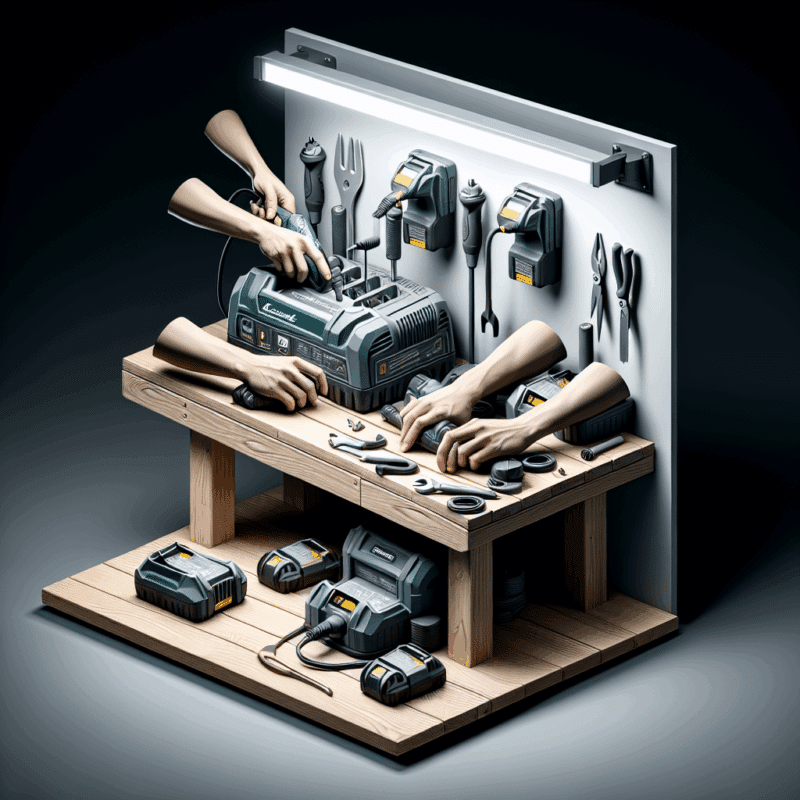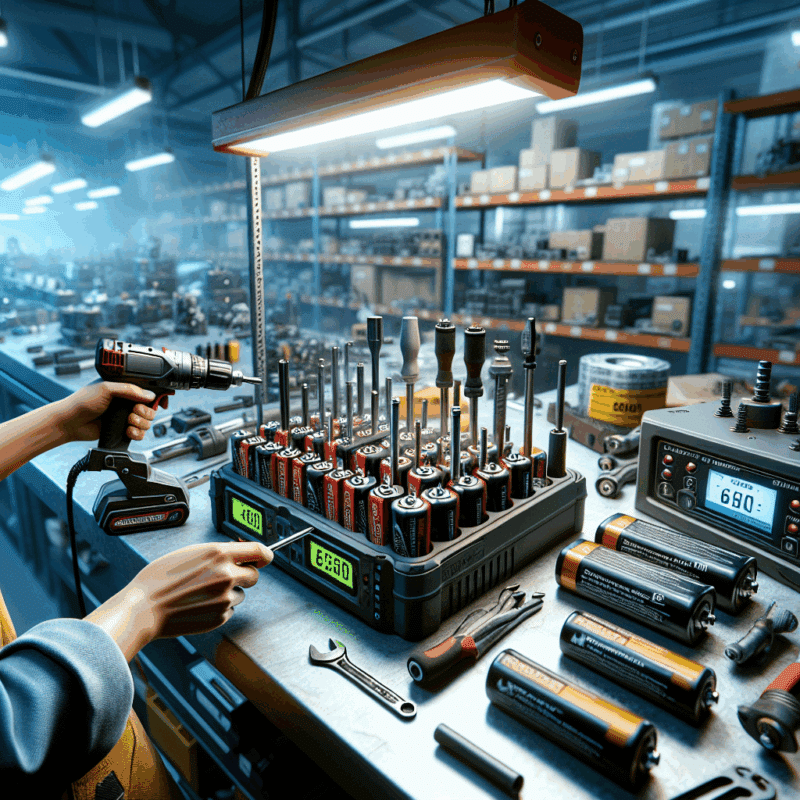Pro Tools Demand Pro Chargers: Align Power With the Right Kit
In This Article
- Always match voltage and amperage exactly between charger and battery.
- Look for CE, UL or ETL certifications for professional-grade assurance.
- Use manufacturer-recommended chargers when possible for thermal optimisation.
- Select smart chargers with variable modes for balancing speed and safety.
- Dual or multi-port chargers can reduce downtime significantly on job sites.
- Be sceptical of uncertified third-party chargers, especially those without surge protection.
Why Pro Kits Require the Right Chargers
Power Demands in Today’s Jobsite Tools
Choosing suitable pro tools chargers is no longer a luxury but a necessity for tradespeople, engineers, and technicians working with demanding equipment. With advancements in cordless tool technology, manufacturers now design tools with higher power capacities and tailored battery systems. These require chargers that match specific voltage and amperage ranges to achieve efficient, safe charging. When chargers are mismatched, performance dips and tool longevity suffers.
Professional-grade tools such as rotary hammer drills, impact drivers, and SDS concrete breakers draw substantial power from their batteries. Trying to charge these with under-powered kits leads to inefficient energy delivery, battery swell, and even dangerous overheating. Equally, pushing a battery beyond its rated input can trip thermal limits or activate protective circuits. That’s why alignment between tool, battery and charger is crucial—each component must function in perfect electrical harmony.

Voltage and Amperage Explained
Matching Electrical Specs to Charger Ratings
The two key specifications to consider when evaluating pro tools chargers are voltage (V) and amperage (A). Voltage represents the electrical potential delivered to recharge the battery. Amperage measures the current flowing into the battery during charging. If your battery is rated at 18V, a charger that doesn’t match this voltage either won’t charge it properly or could damage internal components.
Beyond voltage, amperage plays a direct role in charging speed. Higher amperage allows for faster charges—but only if the battery can safely handle it. Overcharging a battery with excessive current can cause heat buildup, shorten its life cycle, or in extreme cases, result in fire hazards. Chargers specifically engineered for pro kits regulate current flow using chipsets that communicate with the battery, ensuring optimal performance and safety.
Always refer to your tool or battery manufacturer’s documentation. This ensures that your charger’s output aligns with the intended tolerance range, preserving battery integrity. Learn more about Professional Tool Charging & Power Solutions can help clarify what ratings your toolsets require.
How to Choose a Pro-Grade Charger That Lasts
Certified Reliability for Long-Term Use
Not all pro tools chargers are created equal—some are built for speed, others for safety or thermal efficiency. Professionals should seek chargers that meet stamped industry standards such as CE, UL, or ETL certifications. These ensure the unit has passed rigorous safety and durability tests. The quality of capacitors, heat dissipation systems, and internal regulators makes a long-term difference, especially under constant site use.
Look for chargers with extruded aluminium heat sinks, automatic fan cooling, and precise voltage cutoff points. These elements collectively work to regulate temperature during charge cycles. Pro-grade chargers also often include firmware updates, enabling smarter regulation techniques over time. When evaluating charger options, consider quality evidence like long manufacturer warranties and field-test reviews. Reliability isn’t just about surviving occasional use—it’s about performing effectively day in, day out on demanding sites.
Third-Party Chargers: Risk or Reward?
What to Consider Before You Buy
Third-party pro tools chargers can be tempting thanks to their lower cost. However, these savings can become costly if the charger isn’t properly matched to your battery spec. While some reputable brands manufacture compatible units backed by performance data, many unbranded third-party chargers fail to meet even basic safety protocols. A subpar charger may overheat or undercharge, diminishing battery capacity with every cycle.
If you’re considering a third-party option, inspect the datasheet carefully. It should clearly detail output voltage, amperage, and wattage. CE marking and surge protection support are mandatory—but even then, be wary unless thorough tests and reviews are available publicly. View Pro Tools compatible charger specifications reviews several known third-party chargers and compares them with OEM alternatives.
Where possible, verify whether the charger supports your battery’s communication chip. Modern batteries and OEM chargers often coordinate charge-discharge cycles intelligently. Without this, third-party chargers may shorten the battery’s usable life or even void its warranty.
Fast Charging vs. Safe Charging — Find the Sweet Spot
Balancing Speed and Longevity
In today’s markets, rapid charging is a top feature for busy professionals. However, there’s often a trade-off between speed and battery health. Many pro tools chargers advertise full charges in under 30 minutes, but this feat often relies on pushing cells near their thermal thresholds. Without proper internal control, that heat becomes damaging across repeated cycles.
The solution lies in smart charging algorithms. Manufacturers like Makita, Milwaukee, and Bosch incorporate microcontrollers that adjust current in real time based on cell temperature, charge stage, and voltage deviation. These systems allow some models to charge quickly in cooler conditions while reducing speed when necessary. The most advanced chargers also allow user control over charge speed modes—“eco” options protect old batteries from accelerated wear.
As a rule of thumb, never sacrifice battery integrity for minor gains in convenience. Chargers like the VoltGuard 6500 find that optimal balance by actively regulating watt distribution while completing a charge efficiently. Read a related article explores more tools that offer controlled high-speed output.
Safety Features Every Professional Should Demand
From CE Certification to Overcharge Protection
Chargers are electrical devices, and safety should always come first. Essential safety features in high-quality pro tools chargers include overcurrent protection, overvoltage shutdown, thermal feedback loops, and short-circuit isolation. Without these, a failed cell can lead to charger failure or worse—electrical fire. Certified chargers are rigorously tested under these scenarios to ensure safe behaviour.
Features like flame-retardant ABS housing, integrated circuit breakers, and double insulation protocols reduce the risk further. Some premium chargers incorporate LED alert systems, letting users instantly see if the system detects a problem. Safety isn’t just for peace of mind—on trade sites, it’s compliance-critical. Building code auditors and safety inspectors increasingly request documentation on such equipment. 2025 guide to automation in technical tools discusses emerging global safety standards for power tools and their accessories.
Tool Compatibility: LXT, CXT & Beyond
Don’t Compromise on Matching Specs
Compatibility is one of the most overlooked aspects of selecting pro tools chargers. Brands like Makita use categorisation labels like LXT (Lithium-ion eXtreme Technology) and CXT (Compact eXtreme Technology) to differentiate charger-battery compatibilities. Using a charger not meant for a certain platform can result in little to no charging or cause long-term cell instability.
LXT batteries, for example, usually require 18V input with smart cell management; CXT batteries, being smaller at 12V, are not only physically different in port layout but structurally optimised for compact tasks. Always verify charger cross-compatibility with different lineups—some dual chargers accommodate both ranges, but many are model-specific. Investing in compatible multi-port chargers not only saves time on-site but ensures every platform receives its required current and voltage parameters safely.
Real Workshop Stories: Chargers That Deliver
Examples from the Trade
Veterans in the trades often agree—good pro tools chargers directly impact productivity. Take Charlie, a joiner in Newcastle, who swapped a generic charger for a certified Makita DC18RC. “Within a week, I noticed faster charges and colder batteries during usage,” he recalls. Over a month, he gained nearly two extra hours per day due to less downtime.
Meanwhile, flooring contractor Amara Davies in Sheffield shares her experience after switching to a dual-port rapid charger. “We used to rotate three separate chargers. Now, two batteries charge simultaneously, and we’ve reduced our charging backlog by over 40%,” she says. These stories underscore the hidden costs of poor charging infrastructure—and the immediate gains from upgrading.
Comparison Tools That Save You Time
Use Our Resources to Make the Right Call
With a growing market for pro tools chargers, making an informed decision isn’t always straightforward. Fortunately, online tools allow professionals to filter options by voltage, brand compatibility, and feature sets. Comparison tables, voltage calculators, and live user ratings simplify the process exponentially.
When shopping online, avoid listings that omit amperage specs or voltage tolerances. Use verified vendor sites, and read reviews that mention long-term use. Consistent keyword searches such as “LXT compatible charger 18V” inside a filtered marketplace often yield the best results. From an operations standpoint, investing in data-backed purchasing not only ensures compatibility but also strengthens safety compliance across your tools.
Charge Smarter with Torxup VoltGuard 6500
Why It’s a Standout for Makita Tools
Among recommended pro tools chargers currently available, the Torxup VoltGuard 6500 repeatedly earns praise for its robust build and accurate charge control. Designed for full compatibility with Makita’s 18V LXT platform, it uses a dynamic input optimiser that detects charge capacity, remaining power, and heat fluctuations before adjusting internal current drivers.
It features dual 4-amp channels, allowing simultaneous rapid charging—reducing time loss significantly on larger sites. The casing is IP54 rated, making it splash-resistant and suitable for dusty construction zones. Furthermore, the VoltGuard 6500 includes multiple LED status indicators, surge suppression layers, and auto shutoff after full charge. It’s CE-certified and cross-tested with most Makita-compatible clones.
Professionals looking for a smarter way to manage battery turnover without compromising safety or battery longevity will find the VoltGuard a worthy upgrade to their kit.
“Switched to VoltGuard 6500 and noticed an immediate uptick in speed and safety—no more battery overheating at midday!” – Darren A., Electrical Contractor
Conclusion: Align Charger Performance to Your Kit’s Demands
In professional trades, tools are more than assets—they’re critical links in your workflow. That makes pro tools chargers just as vital. Mismatched chargers lead to inefficiencies, degraded batteries, and lower on-site safety. Conversely, properly matched, certified, and intelligent chargers offer longer battery life, fewer service interruptions, and peace of mind against potential hazards.
From voltage harmony to advanced safety features, your charger choice impacts the performance of your entire kit. Remain vigilant of compatibility, prioritise tested and certified units, and remember: a good charger doesn’t just fill batteries—it protects your tools and furthers your productivity. Choose smart, work efficiently.
Great guide on pro-tools-demand-pro-chargers-match-output-right-kit – Community Feedback
How do I select the right charger for my Pro Tools setup?
Start by identifying your tools’ voltage and amperage requirements, then choose a certified charger that meets or exceeds these specs. For best results, select pro-grade chargers designed for continuous heavy use and safety.
What safety features should I look for in a professional charger?
Key features include overcharge protection, thermal management, short circuit safeguard, and clear voltage/amperage displays. Certified chargers with CE markings give added peace of mind.
Can I use a third-party charger with my professional tools?
You can use third-party chargers, but opt for those verified for tool compatibility and CE-certified. Using untested models risks slower charging, overheating, or even damaging your batteries.




